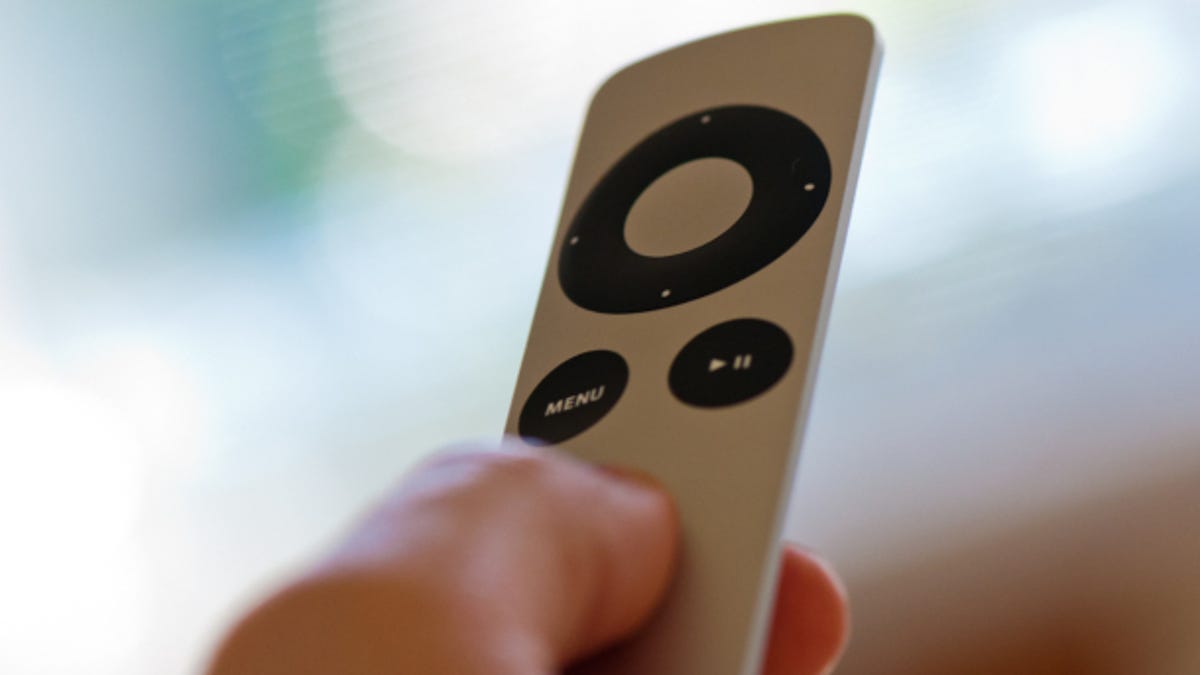Another idea for Apple's rumored TV: An 'iDevice'
A Forrester analyst puts out the idea that Apple needs to offer something less like a TV to make a splash. But that only tells part of the story.

It still may be a down economy for many, but the veritable cottage industry for jockeying when Apple will enter the TV business is booming. The latest to weigh in on the topic is Forrester analyst James McQuivey with a suggestion that Apple ought to offer a device that sounds to me like something between a giant iPad, and Microsoft's latest version of its Surface computer.
Without mentioning Microsoft's table computing product, which was revamped last January to work both as a table and mounted to a wall, McQuivey suggests a TV set from Apple would be more like a giant iPad married with Microsoft Kinect, enabling both touch and gesture controls, and -- of course -- apps:
Here's me putting on the record what I've been telling clients behind closed doors for more than a year: Apple should sell the world's first non-TV TV. Instead of selling a replacement for the TV you just bought, Apple should convince millions of Apple fans that they need a new screen in their lives. Call it the iHub, a 32-inch screen with touch, gesture, voice, and iPad control that can be hung on the wall wherever the family congregates for planning, talking, or eating -- in more and more U.S. homes, that room is the dining room or eat-in kitchen. By pushing developers to create apps that serve as the hub of family life -- complete with shared calendars, photo and video viewers, and FaceTime for chatting with grandma -- this non-TV TV could take off, ultimately positioning Apple to replace your 60-inch set once it's ready to retire.
As Fortune points out, McQuivey isn't the first to float the idea of the Apple TV as a catch-all device. In a note to investors last month, Jefferies analyst Peter Misek suggested Apple's TV set would be named the "iPanel" and serve as a "display, gaming center, media hub, computer, home automator, etc."
But would people want to turn a device that's largely been used for tuning out into something that resembles a do-it-all family gadget? Seems unlikely. Similar attempts at convergence failed years ago when Verizon tried to mix people's home telephones with digital photo frame computers. When applied to TVs, there was also that whole WebTV thing.
Apple has had success with devices like the iPhone and the iPad in converging similar activities together. The company also figured out how to build them in sizes that match up with those behaviors. Last month, Apple CEO Tim Cook pointed out something along similar lines when describing -- not so subtly -- that Apple did not share the same belief as Microsoft that touch and traditional keyboard and mouse computing could co-exist, as it does in Windows 8.
"Anything can be forced to converge, but the problem is that products are about tradeoffs, and you begin to make tradeoffs to the point where what you have left doesn't please anyone," Cook told analysts during Apple's second quarter earnings call. "You can converge a toaster and a refrigerator, but those things are probably not going be pleasing to the user."
McQuivey prefaced his notion by saying Apple really needs to do something different to capture consumer attention in a market where people update their technology less often. That's as opposed to iPhones, which have become Apple's biggest money-maker due in no small part to their shorter lifecycle among buyers who get them as a discount when signing two-year phone contracts.
"You can't jump in [the TV business] with a new version of the same thing everyone already has -- even if it is elegant -- and expect millions of people to buy it, especially at price points that Apple will have to maintain in order to keep its margins far away from those of LG and Samsung," McQuivey said.
And cost is a valid consideration. In a recent survey by Strategy Analytics that polled U.S. and European customers, the number of people willing to pay more than $1,600 for a TV set from Apple (features unknown), dropped sharply compared to those that wanted it at around $1,000. That people want to pay less should not be a surprise, but what was important is how many were were not willing to pay more.
Packing in the kind of technology McQuivey mentions -- things like a touch screen, Webcam, microphones, and the guts of an iOS device -- certainly would not come cheap. For a very non-scientific comparison, Microsoft's second-generation Surface device, which is comprised of a 40-inch TV with a touch screen that's been optically-bonded to a piece of Corning's Gorilla Glass, retails for about $8,000. Yes, that's not remotely fair considering it's got some additional high-tech optical sensor technology, and has a built-in PC running Windows, but you get the point: costs can skyrocket the more you try to cram in there.

